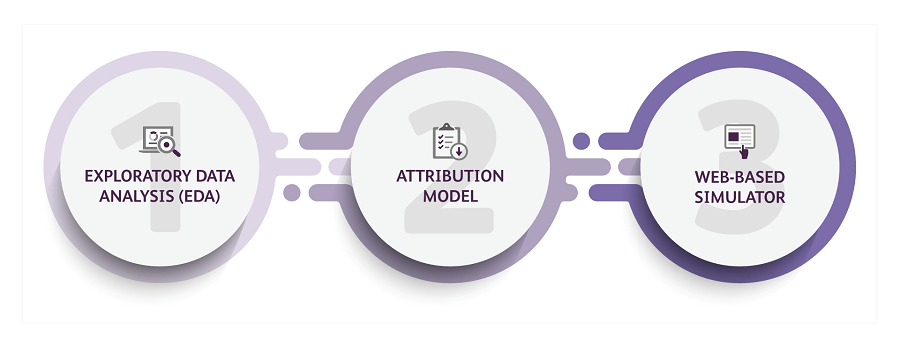The Challenge
As customer purchasing behavior changes, organizations are struggling with finding different ways to attract, engage and retain customers within their marketing budget. An IT solution provider needed help optimizing their digital channel marketing spend so that they can get the most out of it. Our team developed a 3-step approach to help the client plan their marketing spend effectively, with marketing efficiency and effectiveness as guiding principles.
Our Solution
In order to effectively understand today’s marketing trends and optimize campaign efforts accordingly, we need to first recognize the strengths and weaknesses of the individual measurement methods we use. When it comes to marketing mix modeling and data-driven attribution, both offer valuable insights that can lead to better campaign performance, but we are better served using a combination of the two to account for gaps in data coverage and to arrive at a robust spend optimization methodology:

When seeing what model would best fit the client, our team performed an exploratory data analysis that identified patterns and variance in the client’s data. This allowed the client to see patterns, trends and variance in the data. They were able to gain insight into each of their channel’s touch points and the conversion rates attached to them. We followed it up with a top-down statistical analysis to understand how effective each media channel is, when translated to a dollar value and eventually calculated how much revenue is generated when we spend $1 on a specific channel – Traditional MMM.
Step 2: Multi Touch Attribution Model
In order to identify specific touchpoints that contributed to increased conversion, we performed a bottom-up analysis to see where the online visitors were coming from and what was the path to conversion. We developed this multi-touch attribution model based on Markovian graph-based modelling. This enabled the client to assess contributions of each marketing channel to sales and Return on Investment (RoI).
Step 3: Web-based Simulator
Our team took this one step further by creating an interactive web-based simulator in R Shiny. This uses RoI models to help the client create future campaigns by simulating different scenarios based on spend—the lessons from this simulation would then guide the client’s approach when optimizing their market budget allocation.
Business Impact
<p>Prior to this simulation, the client would only change their project allocations once every six months. However, now they can revisit project allocation on a monthly basis and have the flexibility to change direction if their acquisition, engagement or retention-based channels aren’t performing well. If a course correction is needed, then the client can perform this quicker, and go to market faster, instead of spending their budget on channels that do not give them optimal ROI.</p>
<p><a href=”https://www.evalueserve.com/case-studies/”><em><span style=”text-decoration: underline;”>Discover more case studies here</span></em></a></p>
Optimized
buedget allocation that is right for the client.
Speed
in changing project allocations on a monthly basis.
Flexibility
to change market spend on different situations.
Talk to One of Our Experts
Get in touch today to find out about how Evalueserve can help you improve your processes, making you better, faster and more efficient.